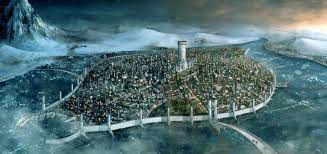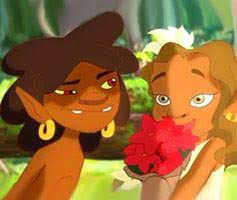Building a World of Fantasy
- albertopupo
- Mar 24, 2023
- 2 min read

Fantasy novels often transport readers to other worlds with rich and complex histories, cultures, and creatures. Building a new world from scratch may seem like an overwhelming task, but with careful planning and attention to detail, it can be an incredibly rewarding and exciting process. In this blog post, we'll explore the art of worldbuilding in a fantasy novel.
Start with a Map
Creating a map is a great way to begin the worldbuilding process. It can help you visualize the geography of your world, including continents, islands, rivers, and mountains. As you create your map, consider the climate and terrain of different regions, as well as how they might affect the cultures and creatures that inhabit them.
Develop Your Magic System
Fantasy novels often feature magic, and developing a consistent and logical magic system is key to creating a believable world. Consider the source of magic in your world, whether it's tied to natural elements or comes from a divine source. Think about the rules and limitations of your magic system, and how different characters might be able to harness its power.
Create Unique Cultures
One of the most exciting aspects of worldbuilding is creating unique cultures for your characters to inhabit. Consider the history, language, beliefs, and customs of each culture, as well as their relationship with other cultures in your world. Think about how different cultures might interact and clash, and how these interactions might drive the plot of your story.
Populate Your World with Creatures
Fantasy novels often feature creatures that are unlike anything in the real world, from dragons and unicorns to elves and dwarves. When creating your own creatures, consider their biology, behavior, and relationship with other creatures in your world. Think about how different cultures might view these creatures, and how they might be used in the plot of your story.
Weave in Historical Events
Just like our world has a rich history, your fictional world should also have its own history, complete with significant events and figures. Consider the major wars, political movements, and cultural shifts that have shaped your world, and how they might still be felt by characters in the present day.
Show, Don't Tell
As you introduce readers to your world, it's important to avoid infodumping and instead show them the details of your world through the actions and perspectives of your characters. For example, instead of telling readers that a certain culture is known for its fierce warriors, show a battle scene in which these warriors are fighting for their cause.
In conclusion, worldbuilding is an essential part of creating a compelling and immersive fantasy novel. By starting with a map, developing a magic system, creating unique cultures, populating your world with creatures, weaving in historical events, and showing instead of telling, you can create a world that readers will be eager to explore. Happy worldbuilding!





Comments